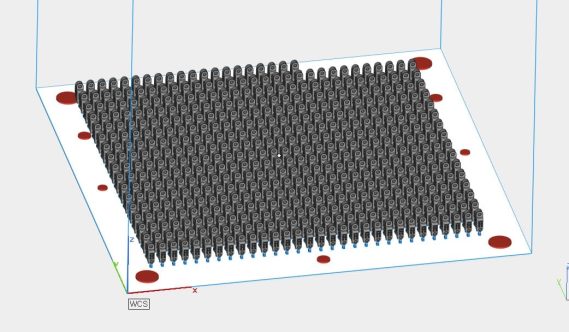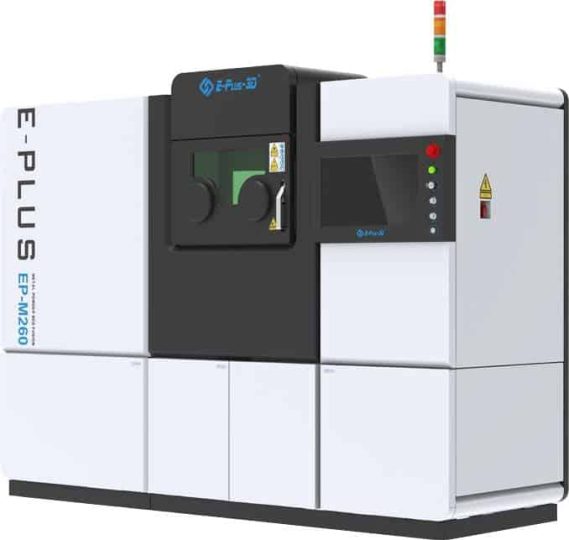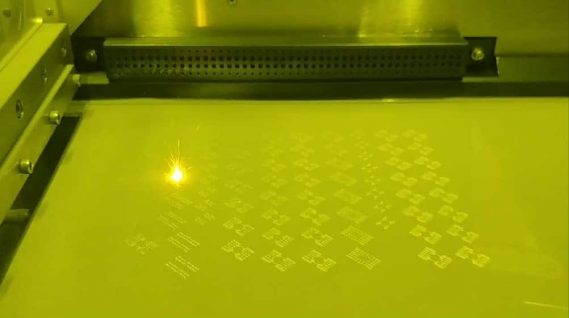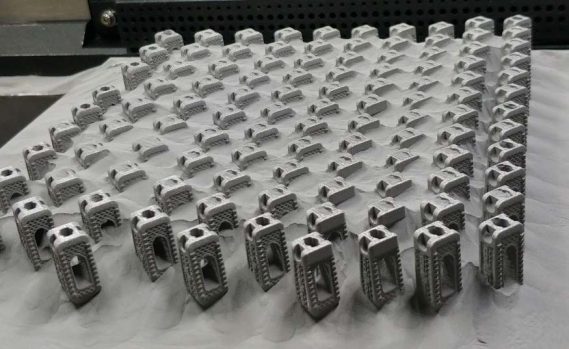Eplus3D remains true to its vision of making personalized 3D printing solutions accessible. With its line of metal 3D printers, Eplus3D has attracted the attention of medical partners who are making extraordinary use of this technology. One of the companies leading the transformation in the production and implantation of medical implants is MANTIZ.
MANTIZ uses the EP-M260 metal 3D printer from Eplus3D to manufacture 3D-printed titanium cages for use in spinal implant surgeries. The entire implant design process is carried out in-house by MANTIZ. The cages are customized according to specifications for implant efficiency—including size, material, shape, and porosity. The final cage design is uploaded to the printer’s software and prepared for printing. Thanks to the EP-M260’s large build volume, MANTIZ is able to print over 50 individual implants in a single build. After implantation, the surrounding bone and tissue begin to fuse with the implant, forming a stable structure in the patient’s spine.
Heong-Won Yoon, inventor of the 3D-printed PANTHER cage system and CTO of MANTIZ, said:
“We have completed the development of a more improved titanium 3D printed cage implant using the EP-M250 3D metal printer. Mechanical test results prove the safety and functionality of the implant. 3D printing The average closed pore ratio of the solid titanium component is 3%, which promotes the binding of the protein for bone fusion to the mesenchymal stem cells.”


Design and 3D Printing Process of the Implants:






Advantages of Titanium Cage 3D Printing:
Only after a series of mechanical tests can the cage be used in surgery. The PANTHER system is already in clinical use.


The PANTHER was developed to optimize bone growth in spinal surgeries, with an average pore size of 630–730 microns on the surfaces in contact with the vertebral endplate, and a porosity ratio of 70–80% in the mesh structure.





